Bureaucrats blamed for East Gippsland not being ‘holiday ready’
East Gippsland towns devastated by the January bushfires fire say the tourism industry might not be able to fight back, with many pointing the finger at lousy bureaucrats who promised to help them back.
Victoria
Don't miss out on the headlines from Victoria. Followed categories will be added to My News.
East Gippsland’s hopes of a tourism-led economic recovery after the double whammy of bushfires and the pandemic are being jeopardised by red tape holding up crucial projects, amid fears the region won’t be “holiday ready” by the summer.
The concerns come as new figures show the region hit by a 19.5 per cent slump in its economy in the last financial year, about six times worse than the rest of the state.
Research by SGS Economics and Planning showed accommodation, retail, arts and recreation were the hardest hit in a region that faced a $372m annual shortfall.
SGS principal Terry Rawnsley said the challenge was for residents and businesses to hang on until tourists can return. East Gippsland received immediate government funding and public donations soon after the fires, but doubts are growing about the ability of the tourism industry to fight back, if the pandemic allows, this summer.
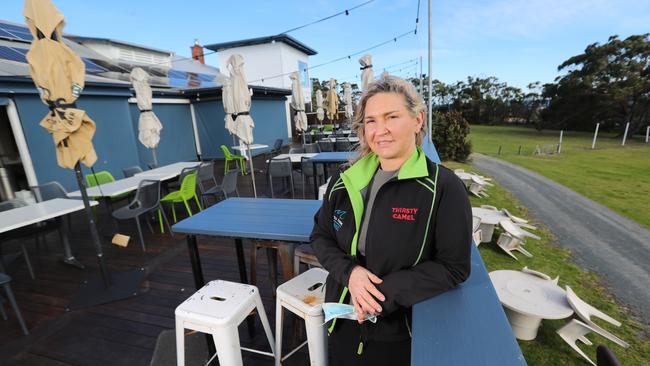
Daniel Andrews said on Monday he was “distressed” by the Herald Sun’s reports that families were still living in sheds and caravans as they battled bureaucracy and issues with insurance policies.
“These good people have paid their premiums year-on-year and they should get their payout as quickly as possible,” the Premier said.
“I am in no way pleased that anybody is waiting such a long period of time.”
State MP for Gippsland East Tim Bull said the slow tourism rebuild was a “disgrace”, especially in national parks such as Wingan Inlet and Cape Conran.
“What have we been doing for nine months, for goodness sake? It is disappointing that we still not only have public infrastructure not completed, but tenders only just going out for some of the rebuild works. There is simply no excuse,’’ Mr Bull said.
“We rely heavily on tourism and should have had everything done and open for business for when COVID restrictions eased. However, the way things are tracking, we will not be.”
For Marlo Hotel landlords Russell Bates and Rachel Jones, a fully operational Cape Conran holiday area was vital to the economy.
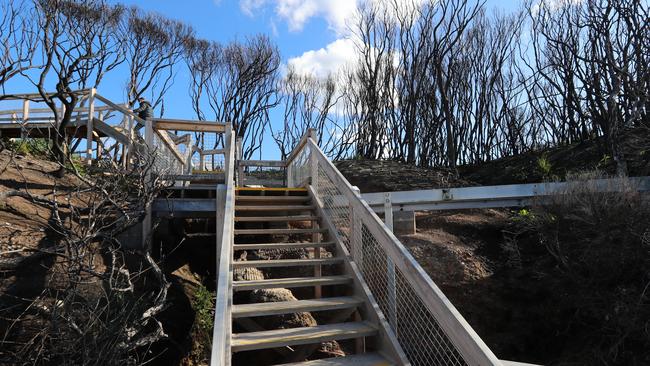
“People need bums on seats. Post-COVID, tourism will be a saviour,’’ she said.
Last year 1.4 million people visited the region, each spending up to $400 a day.
Gippsland federal MP Darren Chester said delays in restoring infrastructure added to the economic strain, after the impacts of drought, bushfires and pandemic.
“Huge promises have been made in terms of local economic recovery projects. But nothing has been built or even approved for funding,’’ Mr Chester said.
“Sadly, East Gippsland entered last summer with structural economic problems, some brought on by job cuts in our traditional industries such as timber and commercial fishing.
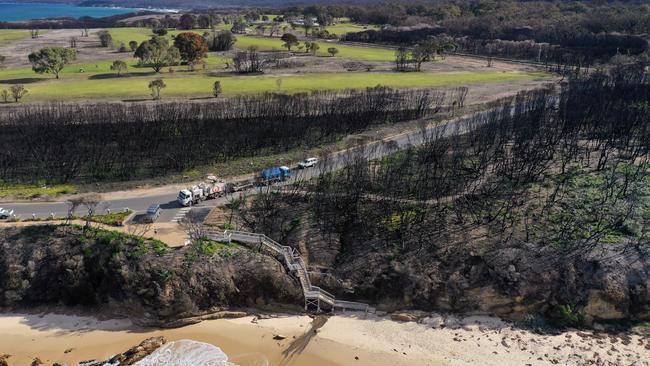
“But we can have a bright future if we invest in our visitor economy. Locals are sick of meeting bushfire recovery bureaucrats: they want work to start on the exciting local projects … We need more boots and less suits.”
Projects such as cleared rail trails, repaired bridges and improvements to national parks infrastructure were still waiting for approval or even being put out to tender.
The $448.5m Local Economic Recovery and Complementary Projects Fund was announced by Agriculture and Emergency Management Minister David Littleproud in May, with projects due to roll out from July 1.
SHELL OF A TOWN ON ROAD BACK
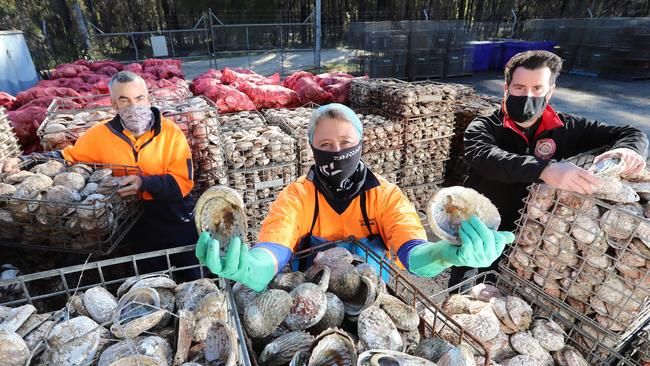
The remote holiday town of Mallacoota is a patchwork of cleared dirt blocks dotted among homes that, through sheer luck or acts of bravery, escaped the blaze.
Just six homes from the more than 100 lost have been rebuilt. Some homeowners may never come back, others are still dealing with grief, insurance or planning approvals.
Hardest hit were Stanley Avenue and Terra Nova Drive, which copped the brunt of the firestorm as it swept towards Bastion Point beach.
Despite the trauma, townsfolk are thankful no one died on that horror New Year’s Eve and 1371 people were able to later evacuate by sea; another 551 by air.
The town is back to its resident population of about 1000, probably fewer. It increases tenfold in the peak holiday season.
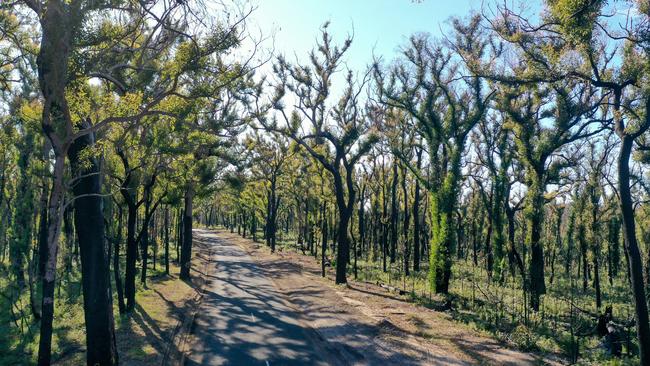

Crucially, its community recovery association, MADRA, is up and running, working on practical help such as NBN installation and mental health support.
One of the town’s heroes is clinical psychologist Rob Gordon, who has provided mental health “first aid” since January.
Tourists from regional Victoria started to return during the September school holidays but the area needs visitors from Melbourne and interstate to help revive the town’s economy.
Its main employer, the Mallacoota Abalone processing plant, restarted operations in a temporary structure in June, with plans to expand post-pandemic.
The processing of the wild seafood harvested daily is taking place in what was the storage and canning shed, spared by the fire.
Chief operations manager Charles Nelson said 70 tonnes of product had been processed since June 1, well down on its pre-pandemic numbers before its Asian markets vanished, but still encouraging. “To be up and running in a converted facility in just four months is pretty amazing,’’ he said.
Mallacoota Beachcomber Caravan Park manager Deb Preston was philosophical about the town’s grim 2020: “Farmers often have bad years, this is just one for us.’’
RELATED:

